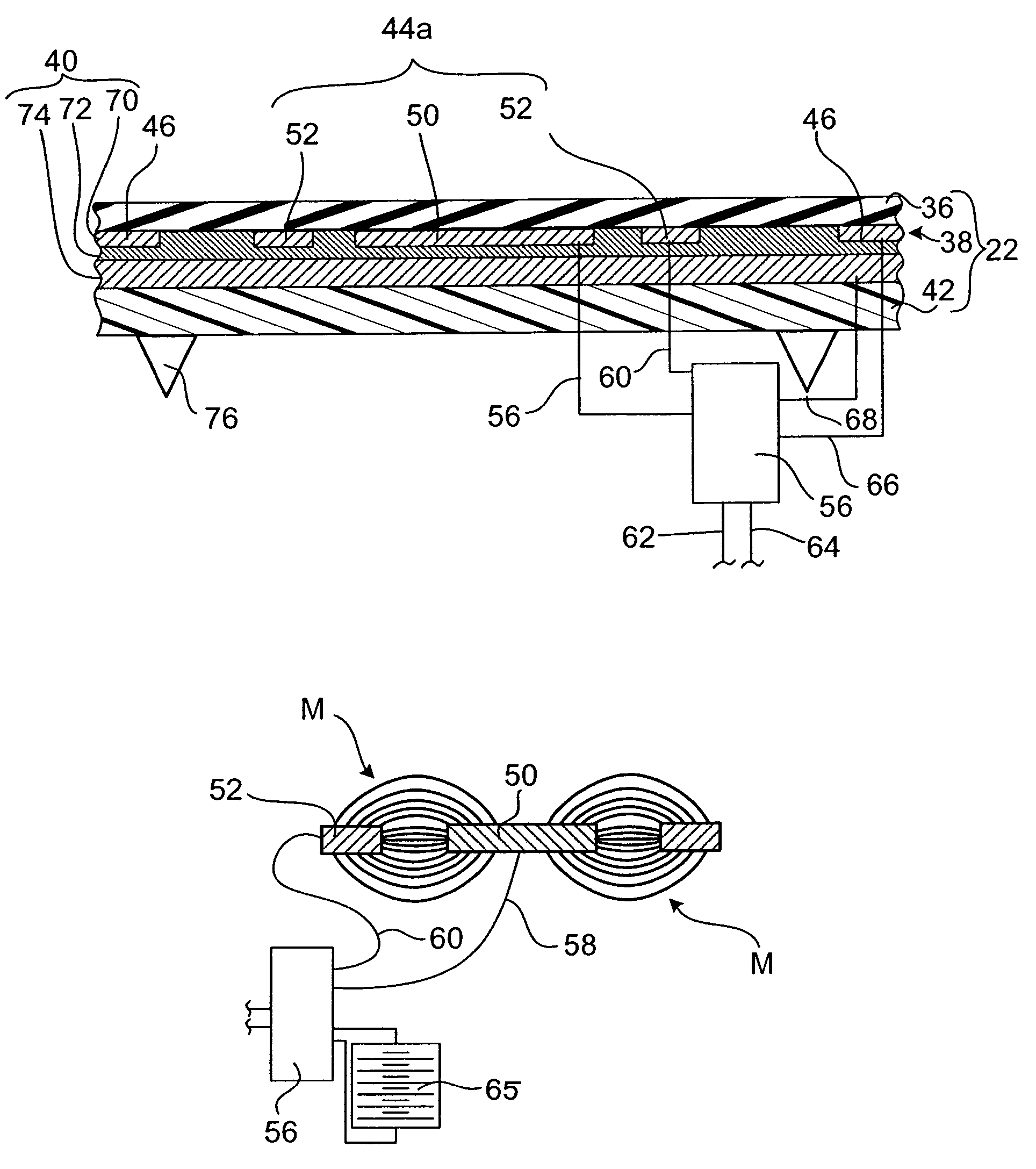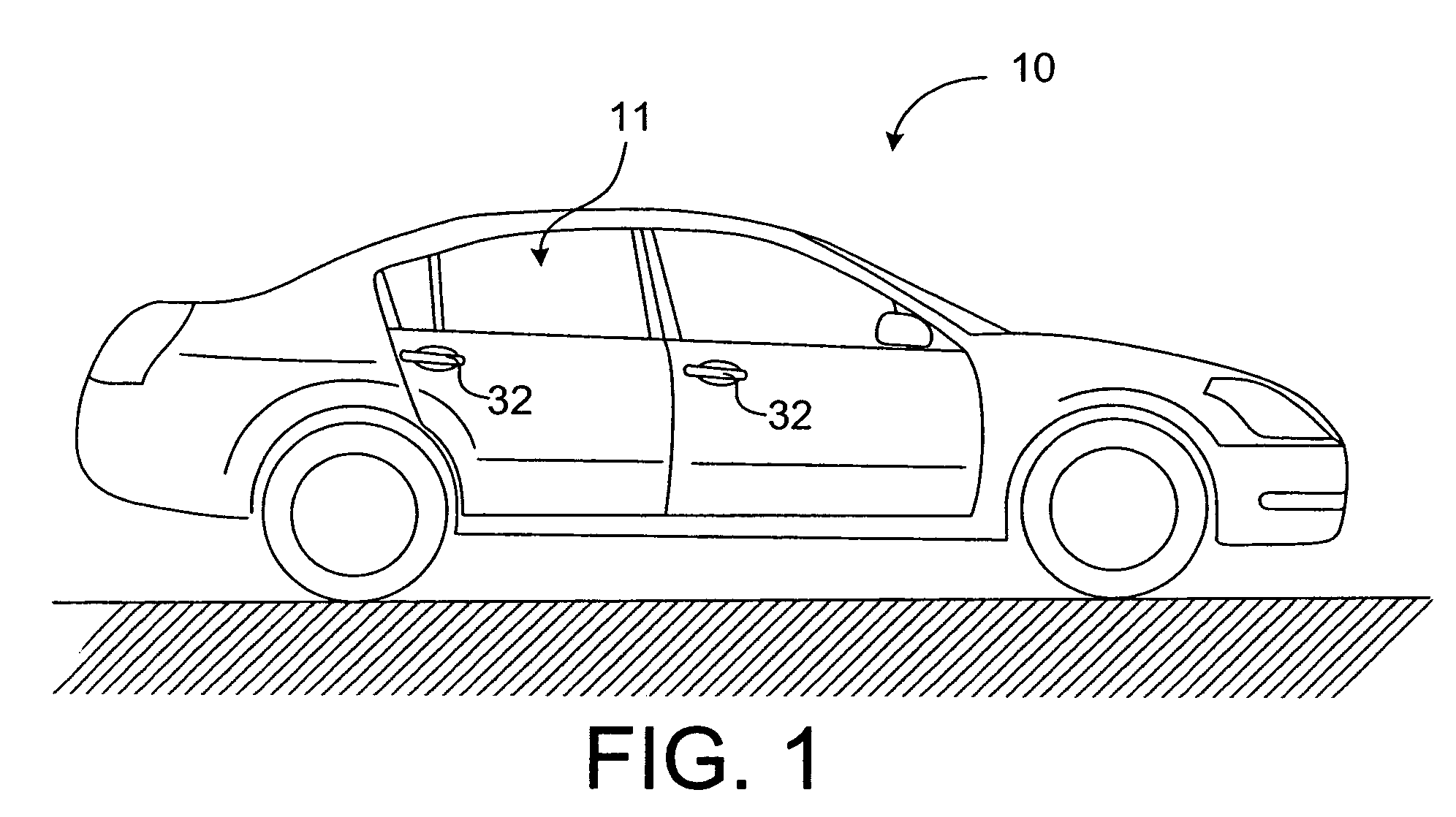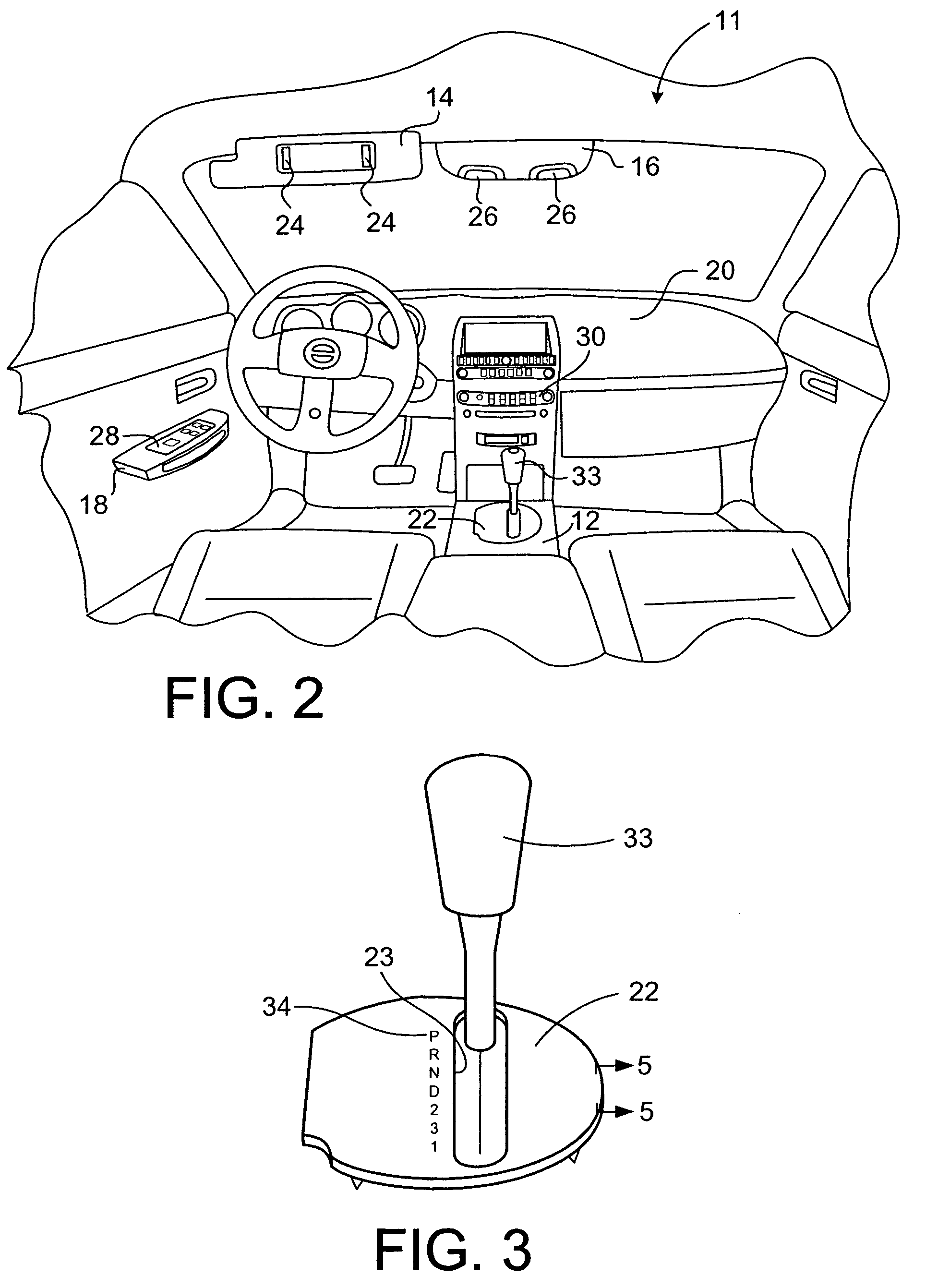Interior/exterior component with electroluminescent lighting and soft touch switching
a technology of electroluminescent lighting and external components, applied in the direction of pulse technique, lighting and heating apparatus, transportation and packaging, etc., can solve the problem of occupying an undesirable amount of space for switches, and achieve the effect of reducing the size of switch assemblies
- Summary
- Abstract
- Description
- Claims
- Application Information
AI Technical Summary
Benefits of technology
Problems solved by technology
Method used
Image
Examples
first embodiment
[0034]In accordance with a first embodiment of the present invention, a description of the shifter light panel 22 is now provided with specific reference to FIGS. 3, 4 and 5. The shifter light panel 22 is, for example, a transmission shifter lever cover, bezel or trim piece that at least partially forms a portion of the center console 12 in the passenger compartment 11 of the vehicle 10. The shifter light panel 22 is formed with an aperture 23 through which a transmission shifter lever 33 extends. The shifter light panel 22 includes indicia 34 adjacent to the aperture 23 that marks locations for positions of the shifter lever 33. The indicia 34 are also herein referred to as visible graphics.
[0035]The shifter light panel 22 is a multilayered unit that includes a series of layers, which each layer formed with an aperture corresponding to the aperture 23 as shown in FIG. 4. The layers of the shifter light panel 22 form both a lighting source and a switch for turning the lighting sourc...
second embodiment
[0062]Referring now to FIG. 10, the switch light panel 28 in accordance with a second embodiment will now be explained. In view of the similarity between the first and second embodiments, the parts of the second embodiment that are identical to the parts of the first embodiment will be given the same reference numerals as the parts of the first embodiment. Moreover, the descriptions of the parts of the second embodiment that are identical to the parts of the first embodiment may be omitted for the sake of brevity. The parts of the second embodiment that differ from the parts of the first embodiment will be indicated with a single prime (′) or a new reference numeral.
[0063]The switch light panel 28 is, for example, a window control panel that controls the operation of driver and passenger side windows. The switch light panel 28 includes seven separate areas of indicia 134a through 134g (visible graphics). Indicia 134a and 134b are headings that identify driver and passenger switch ar...
third embodiment
[0077]Referring now to FIG. 14, a flowchart is shown demonstrating operation of the switch light panel 28 in accordance with a third embodiment of the present invention will now be explained. In view of the similarity between the second and third embodiments, the parts of the third embodiment that are identical to the parts of the second embodiment will be given the same reference numerals as the parts of the second embodiment. Moreover, the descriptions of the parts of the third embodiment that are identical to the parts of the second embodiment may be omitted for the sake of brevity.
[0078]In the third embodiment, the controller 156 of the second embodiment can be configured to operate in a manner slightly different that shown in FIG. 13.
[0079]Specifically, as shown in FIG. 14, the controller 156 of the third embodiment is programmed to turn on the electroluminescent element 40′ in response to input from any one of the proximity switches 144a through 144e.
[0080]For instance, as in...
PUM
 Login to View More
Login to View More Abstract
Description
Claims
Application Information
 Login to View More
Login to View More - R&D
- Intellectual Property
- Life Sciences
- Materials
- Tech Scout
- Unparalleled Data Quality
- Higher Quality Content
- 60% Fewer Hallucinations
Browse by: Latest US Patents, China's latest patents, Technical Efficacy Thesaurus, Application Domain, Technology Topic, Popular Technical Reports.
© 2025 PatSnap. All rights reserved.Legal|Privacy policy|Modern Slavery Act Transparency Statement|Sitemap|About US| Contact US: help@patsnap.com



